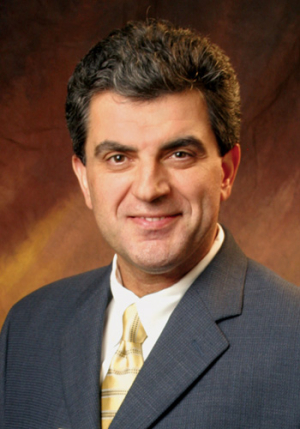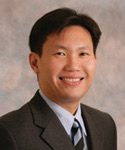The efforts of Mike Nikolaou and Vincent Tam could cut years of the time needed to make new antibiotics available.
The recent case of the Atlanta man who traveled overseas while infected with a form of drug-resistant tuberculosis has a brought to light a looming medical challenge: The days when antibiotics were practically guaranteed to cure every infection from strep throat to TB are coming to an end. Bacterial mutations, the misuse of antibiotics and lack of new medications are making the successful treatment of infections with antibiotics a less certain proposition with each passing day.
That’s not to say the situation is hopeless. Researchers from around the world, including at the University of Houston, are exploring ways to attack this problem from every possible angle.
Mike Nikolaou, professor of chemical and biomolecular engineering with the UH Cullen College of Engineering, and Vincent Tam, assistant professor with the UH College of Pharmacy, are devising a method to speed the development of new antibiotics and to prescribe them in ways that help prevent bacteria from becoming resistant to them. These efforts were initially funded by a seed grant from UH and are now supported by pharmaceutical companies, as well as by a recent three-year, $400,000 grant from the National Science Foundation.
Nikolaou and Tam are developing a computerized modeling system that greatly reduces the number of real-world experiments needed to test the effectiveness of a new drug by forecasting how it will interact with infection-causing bacteria under various conditions.
“The traditional approach of finding a molecule and developing a drug involves a lot of trial-and-error testing,” said Tam. “We’re trying to use computer modeling and simulation to see how bacteria respond to different exposures of a drug. The subsequent investigations can target those that have the highest probabilities of success.”
Specifically, the computer modeling conducted by the pair focuses on potential medications’ dosing regimens: how much medicine a patient should take, how often it should be taken and for how many days. These simulations reveal which regimens are most likely to be effective in combating infection and which are not worth pursuing. Drug companies can then focus actual tests on the best regimens, eliminating tens of thousands of lab experiments.
The advantage of this method is clear. By drastically reducing the number of lab experiments needed to develop a medication, the development time for a new antibiotic—which typically lasts more than a decade—can literally be cut by years. New medications to replace antibiotics that bacteria have grown resistant to can then be brought to market much more quickly. In addition, the proper dosing regimens for these new antibiotics will be better known and understood, enabling the drug to kill bacteria quickly enough that they are less likely to develop a resistance.
In addition to helping to speed the development of new antibiotics, the research Nikolaou and Tam are conducting will also lead to determining the dosing regimens of individual patients with serious infections.
“We’re talking about the most difficult situations where you have a patient whose immune system has been compromised,” said Nikolaou. “You can be on the verge of destroying a patient’s organs with antibiotics, so you have to find the spot where you have the maximum killing effect on the bacteria while not harming the patient.”
Nikolaou and Tam envision this aspect of their research making its way into hospitals in the form of a computer program. Doctors could simply enter information on the patient and the infection into the program, which would then offer details on the most effective, and least risky, dosing regimen.
Ultimately, this effort, and especially the computer modeling and simulation aspect of Nikolaou and Tam’s research, could end up saving an uncounted number of lives.
“New antibiotics have a very limited time of usefulness. They almost come with an expiration date,” said Nikolaou. “The need for accelerating the process of developing new medications is so dire that any help is going to be valuable, so potentially cutting years off the development of an antibiotic is a huge step forward.”

